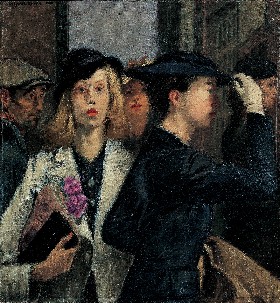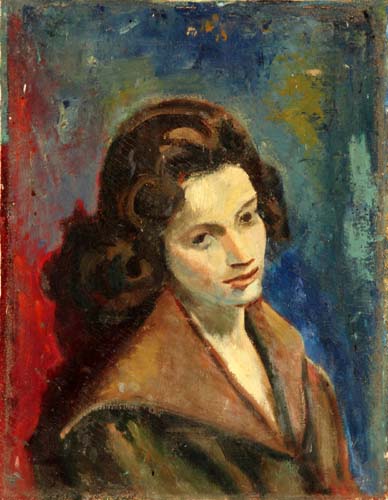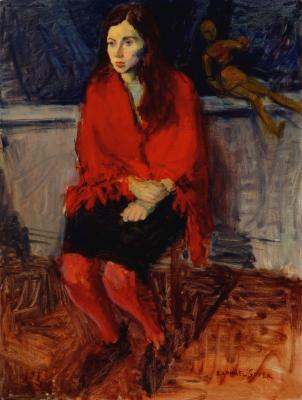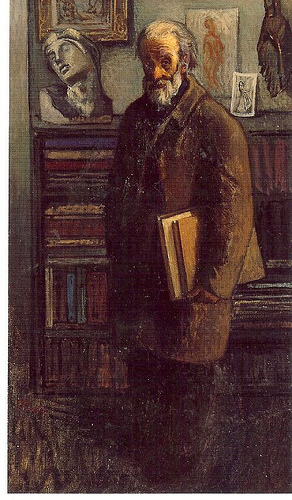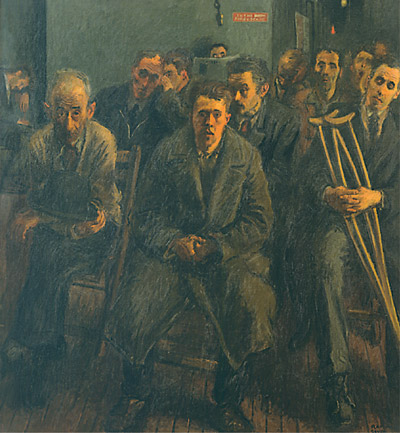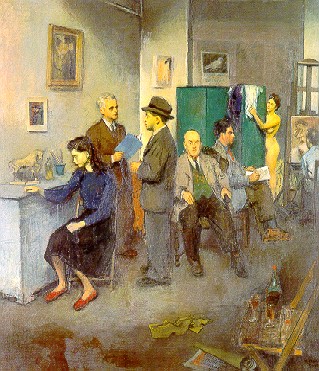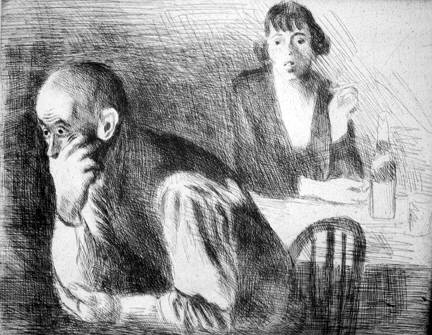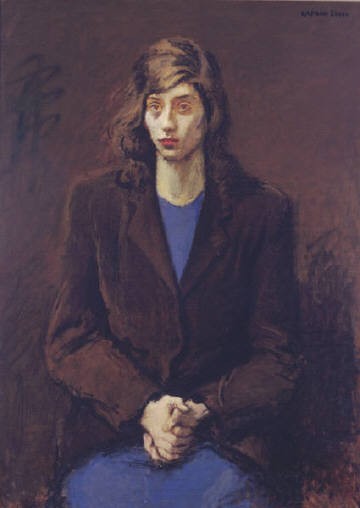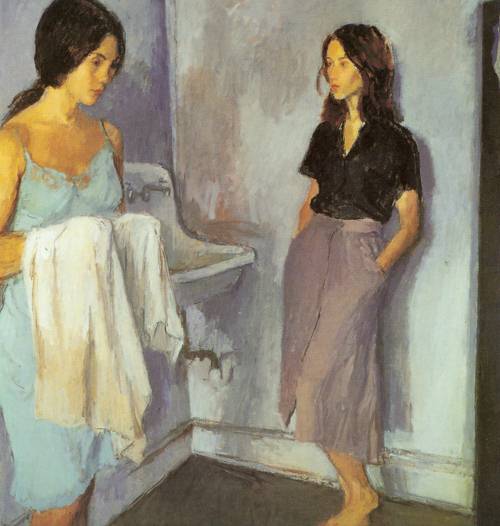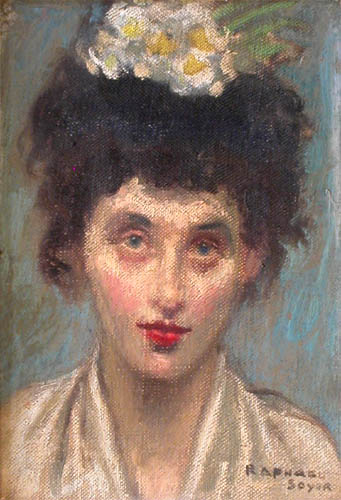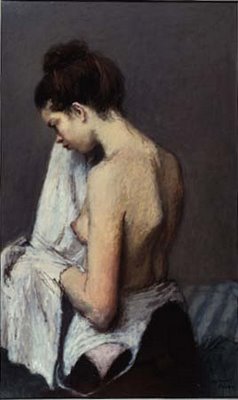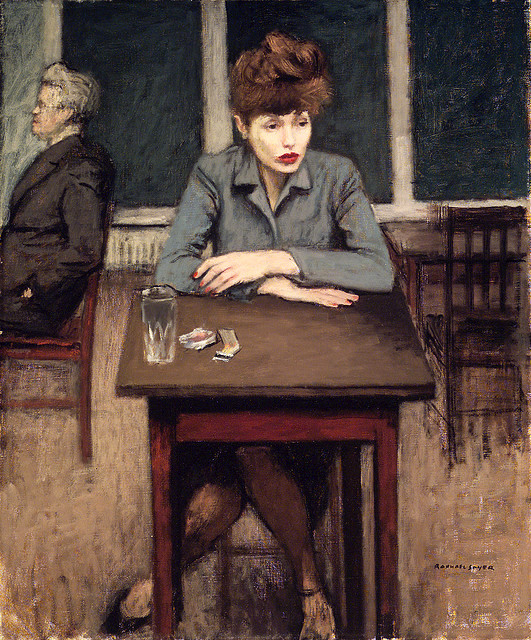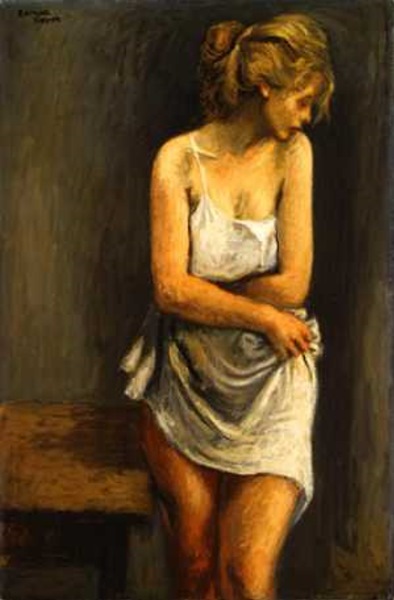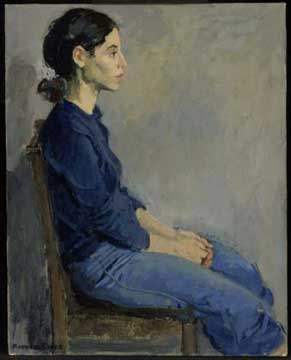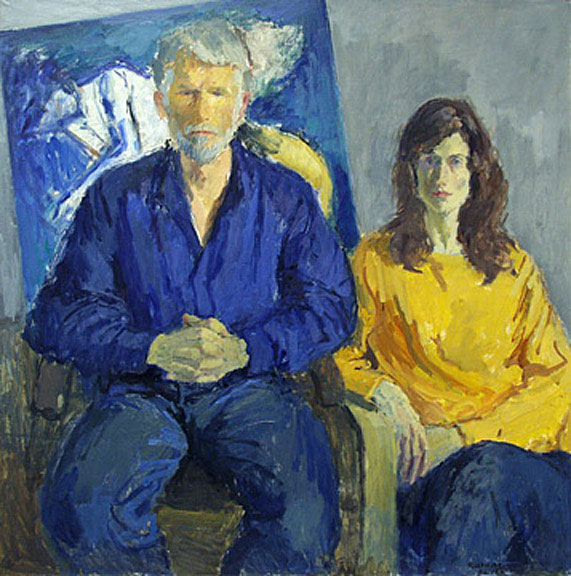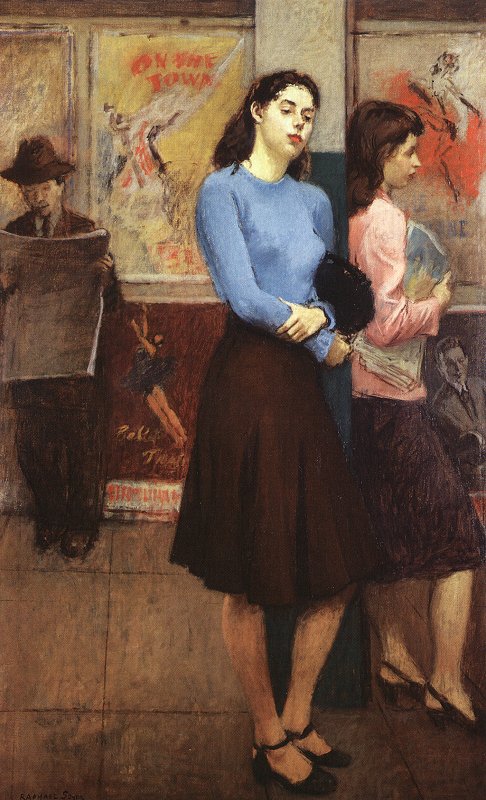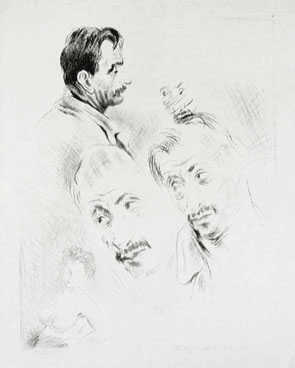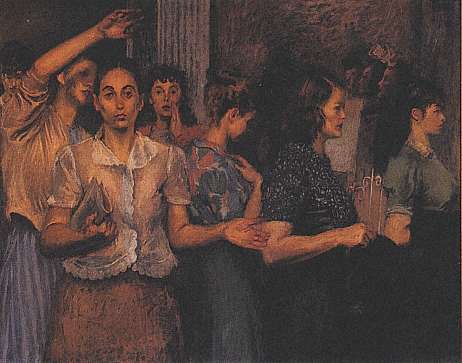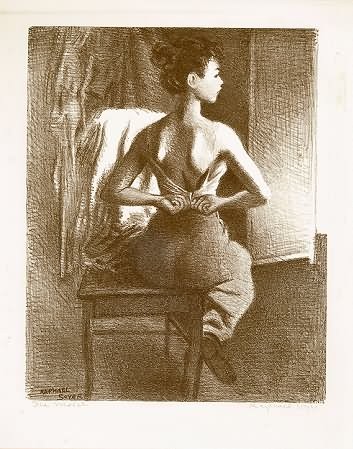<Back to Index>
- Chemist Adolf Otto Reinhold Windaus, 1876
- Painter Raphael Soyer, 1899
- President of the Indian National Congress Madan Mohan Malaviya, 1861
PAGE SPONSOR
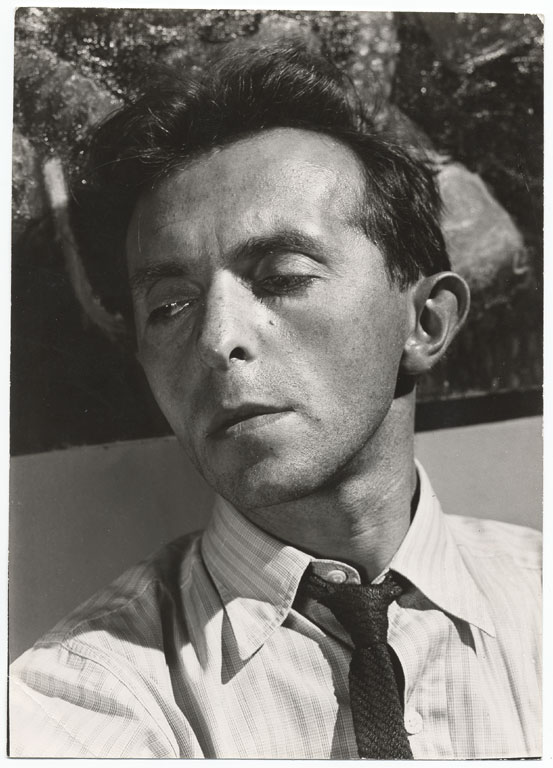
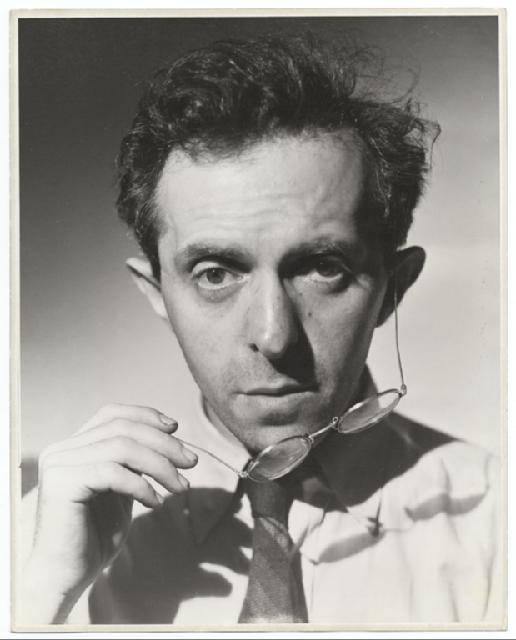
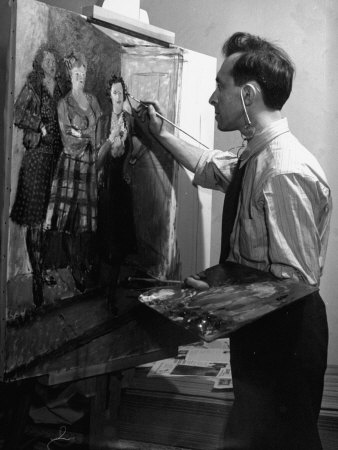
Raphael Soyer (December 25, 1899 – November 4, 1987) was a Russian born American painter, draftsman, and printmaker. Soyer was referred to as an American scene painter. He is identified as a Social Realist because of his interest in men and women viewed in contemporary settings which included the streets, subways, salons and artists' studios of New York City, although he avoided subjects that were particularly critical of society. He also wrote several books on his life and art. His brothers Moses Soyer and Isaac Soyer were also painters.
Raphael Soyer and his identical twin brother, Moses, were born in Borisoglebsk, Tambov, a southern province of Russia in 1899. Their father, Abraham Soyer, a Hebrew scholar,
writer and teacher, raised his five children in an intellectual
environment in which much emphasis was placed on academic and artistic
pursuits. Due to Russian oppression, the Soyer family was forced to emigrate in 1912 to the United States, where they ultimately settled in the Bronx.
Beginning in the early 1930s he showed regularly in the large annual and biennial American exhibitions of the Whitney Museum of American Art, the Carnegie Institute, the Art Institute of Chicago, the Corcoran Gallery of Art, the National Academy of Design, and the Pennsylvania Academy of the Fine Arts. He had a series of solo exhibitions in New York galleries and also worked in the WPA Federal Arts Project in the 1930s.
Soyer's teaching career began at the John Reed Club, New York, in 1930 and included stints at the Art Students League, the New School for Social Research and the National Academy. His work is in numerous museums including the Museum of Modern Art; The Corcoran Gallery of Art, Washington, D.C.; Fogg Art Museum, Harvard University; The Phillips Collection, Washington, D.C.; The New York Public Library, New York; Tel Aviv Museum, Israel; Uffizi Gallery, Florence, Italy, and Los Angeles County Museum, California. Victor Ganz started collecting art in his teenage years with the purchases of watercolors by Louis Eilshemius and Jules Pascin and an oil painting by Raphael Soyer.
